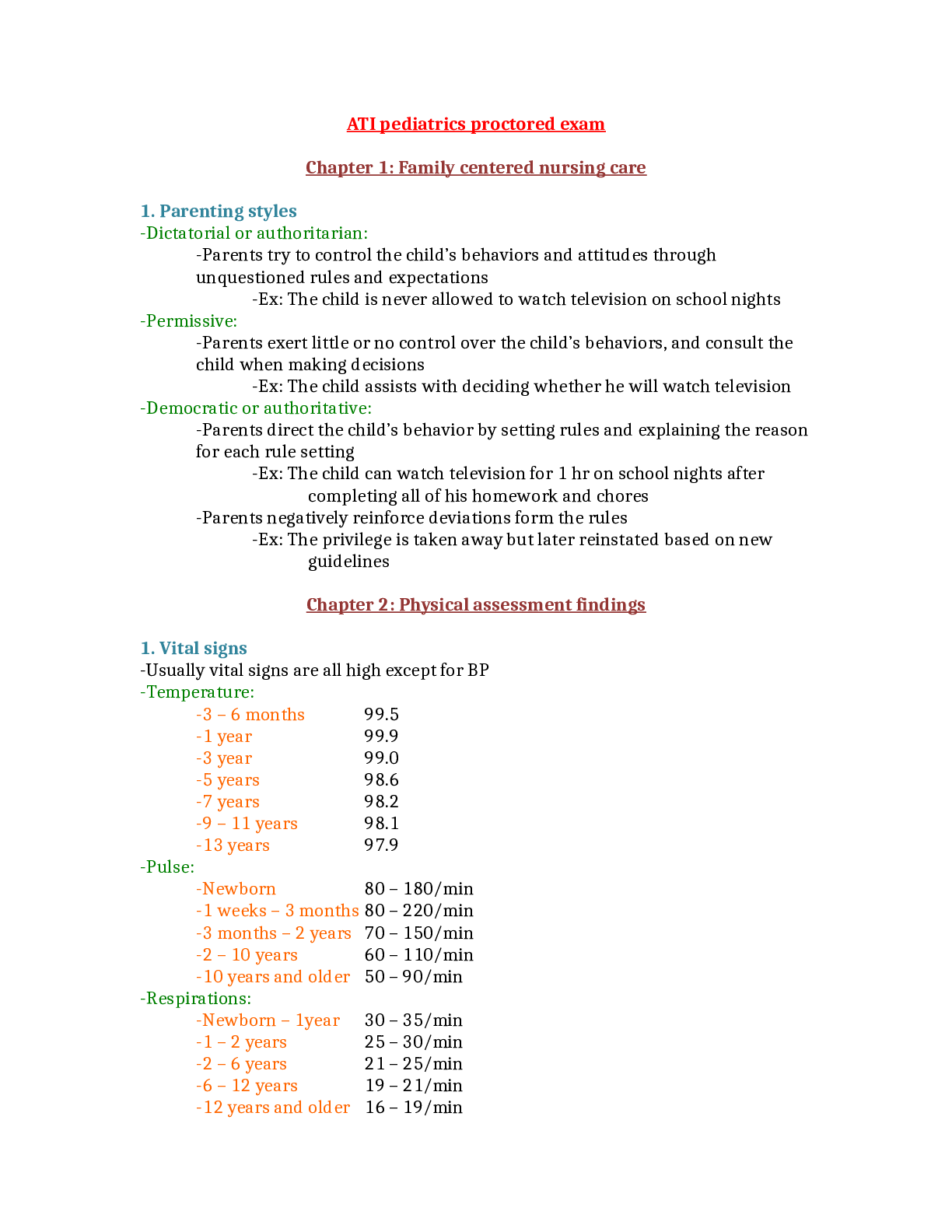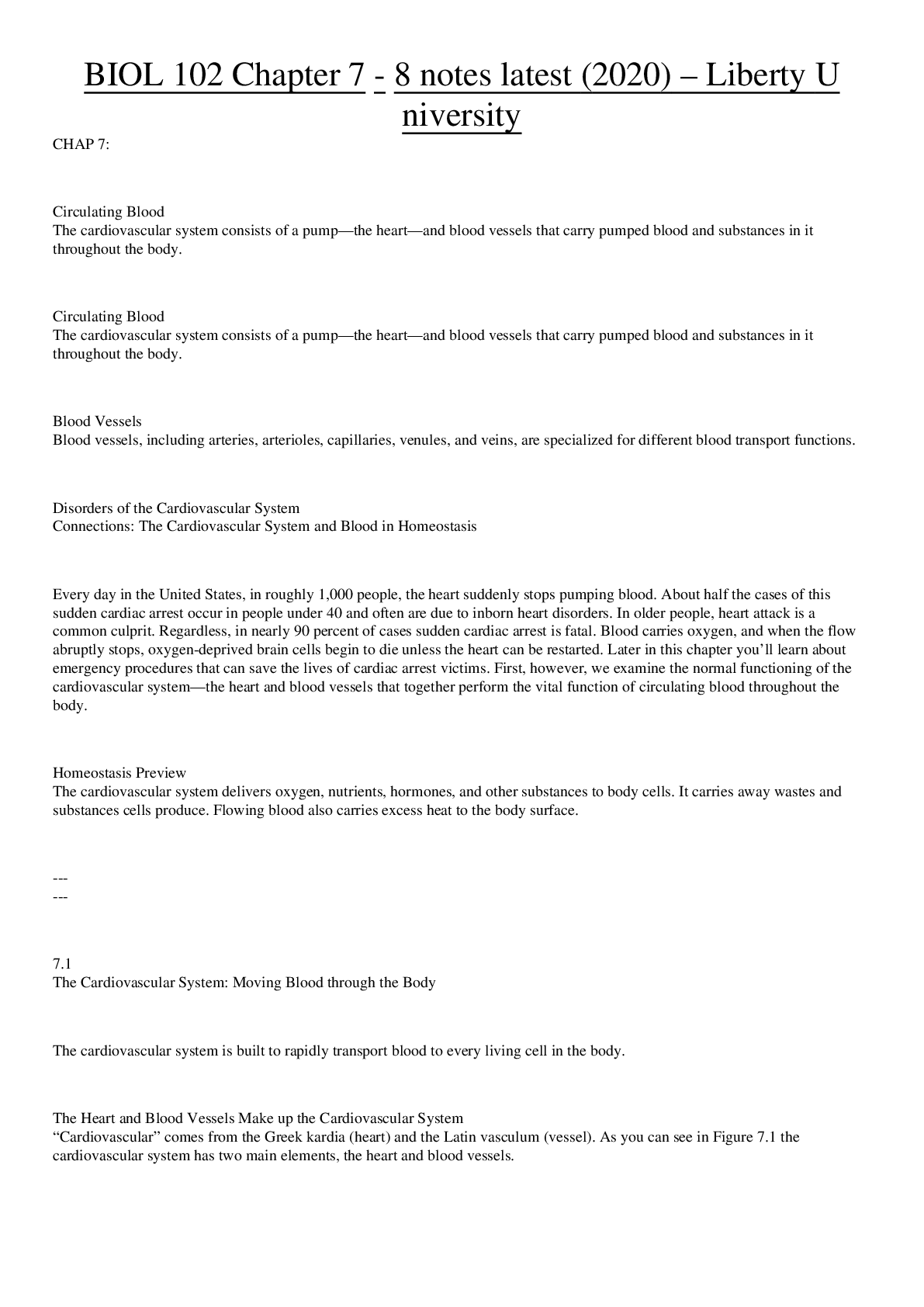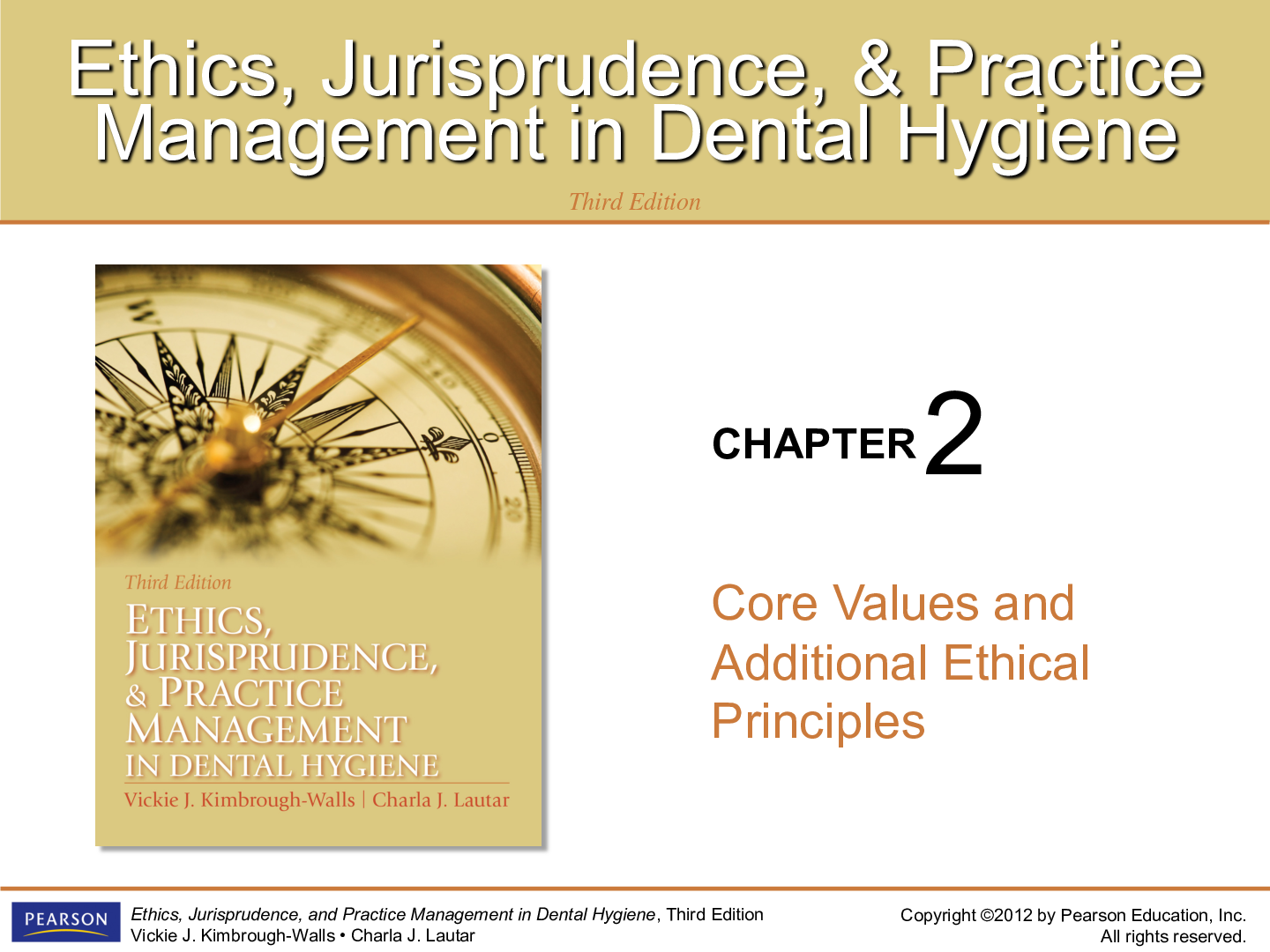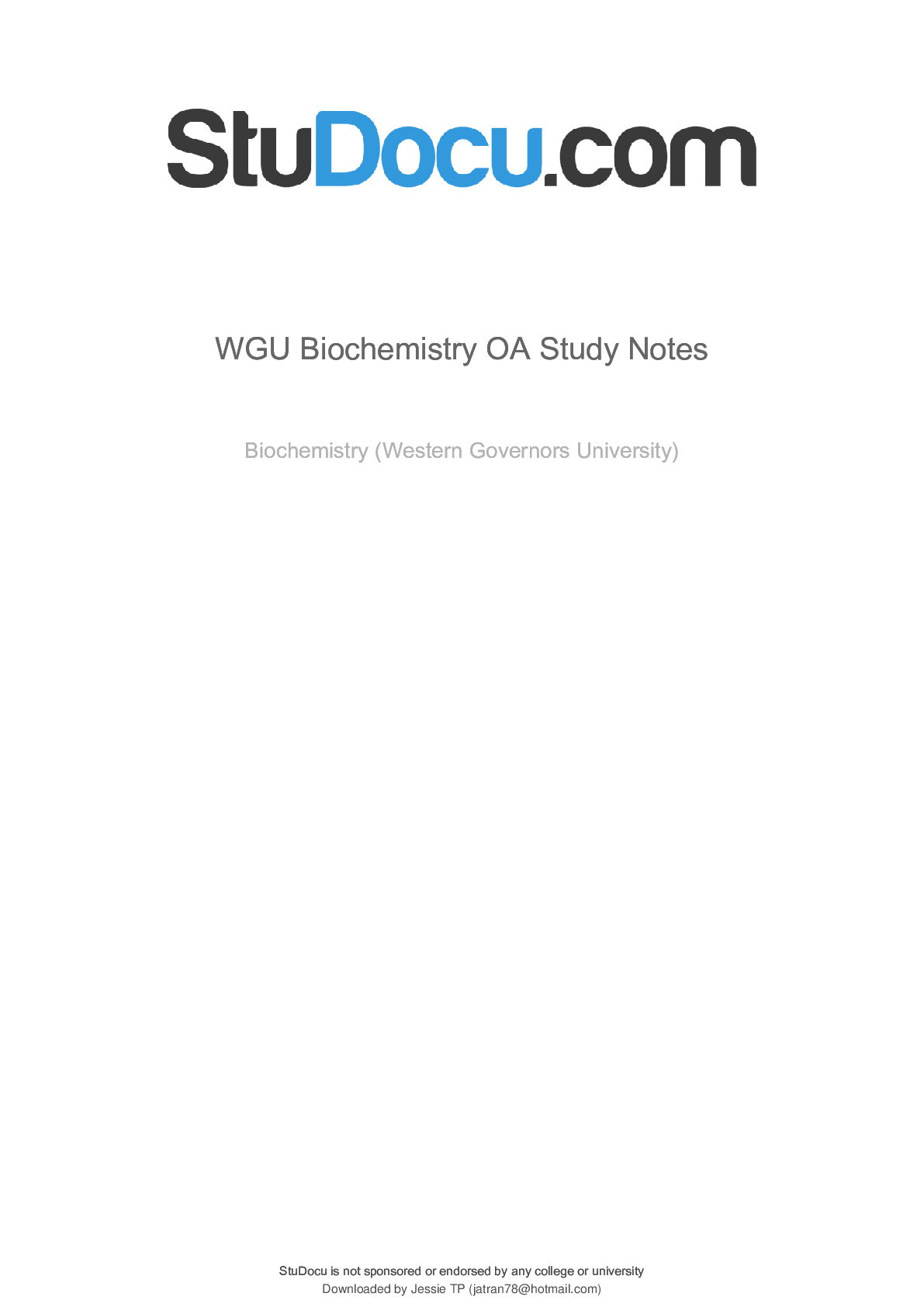Economics > LECTURE NOTES > Lecture Notes for Microeconomics Theory ECON 630 (All)
Lecture Notes for Microeconomics Theory ECON 630
Document Content and Description Below
Lecture Notes for Microeconomics Theory ECON 630 : Contents 1 Preliminaries on Modern Economics and Mathematics 1.1 1 Nature of Modern Economics . . . . . . . . . . . . . . . . . . . . . . . . ... . 1 1.1.1 Modern Economics and Economic Theory . . . . . . . . . . . . . . 1 1.1.2 Modern Economics and Modern Market System Governance . . . . 4 1.1.3 Modern Economics and Ancient Chinese Economic Thought . . . . 13 1.1.4 The Most Basic Assumption in Modern Economics . . . . . . . . . 17 1.1.5 Other Assumptions Usually adopted in Economics . . . . . . . . . . 19 1.1.6 A Proper Understanding of Modern Economics . . . . . . . . . . . 27 1.1.7 Basic Analytical Framework of Modern Economics . . . . . . . . . . 28 1.1.8 Basic Research Methodologies in Modern Economics . . . . . . . . 37 1.1.9 Basic Requirements for Understanding Modern Economic Theory . 43 1.1.10 Roles of Modern Economic Theory . . . . . . . . . . . . . . . . . . 44 1.1.11 Some Remarks on Modern Economic Theory . . . . . . . . . . . . . 45 1.1.12 Distinguishing Sufficient and Necessary Conditions . . . . . . . . . 50 1.1.13 The Role of Mathematics in Modern Economics . . . . . . . . . . . 50 1.1.14 Conversion between Economic and Mathematical Language . . . . . 53 1.2 Language and Methods of Mathematics . . . . . . . . . . . . . . . . . . . . 54 1.2.1 Functions . . . . . . . . . . . . . . . . . . . . . . . . . . . . . . . . 55 1.2.2 Separating Hyperplane Theorem . . . . . . . . . . . . . . . . . . . . 56 1.2.3 Concave and Convex Functions . . . . . . . . . . . . . . . . . . . . 57 1.2.4 Optimization . . . . . . . . . . . . . . . . . . . . . . . . . . . . . . 59 1.2.5 The Envelope Theorem . . . . . . . . . . . . . . . . . . . . . . . . . 62 1.2.6 Point-to-Set Mappings . . . . . . . . . . . . . . . . . . . . . . . . . 63 1.2.7 Continuity of a Maximum . . . . . . . . . . . . . . . . . . . . . . . 68 i1.2.8 I Fixed Point Theorems . . . . . . . . . . . . . . . . . . . . . . . . . 68 Individual Decision Making 75 2 Consumer Theory 77 2.1 Introduction . . . . . . . . . . . . . . . . . . . . . . . . . . . . . . . . . . . 77 2.2 Consumption Set and Budget Constraint . . . . . . . . . . . . . . . . . . . 78 2.3 2.4 2.5 2.2.1 Consumption Set . . . . . . . . . . . . . . . . . . . . . . . . . . . . 78 2.2.2 Budget Constraint . . . . . . . . . . . . . . . . . . . . . . . . . . . 78 Preferences and Utility . . . . . . . . . . . . . . . . . . . . . . . . . . . . . 80 2.3.1 Preferences . . . . . . . . . . . . . . . . . . . . . . . . . . . . . . . 80 2.3.2 The Utility Function . . . . . . . . . . . . . . . . . . . . . . . . . . 85 Utility Maximization and Optimal Choice . . . . . . . . . . . . . . . . . . 90 2.4.1 Consumer Behavior: Utility Maximization . . . . . . . . . . . . . . 90 2.4.2 Consumer’s Optimal Choice . . . . . . . . . . . . . . . . . . . . . . 90 2.4.3 Consumer’s First Order-Conditions . . . . . . . . . . . . . . . . . . 91 2.4.4 Sufficiency of Consumer’s First-Order Conditions . . . . . . . . . . 94 Indirect Utility, and Expenditure, and Money Metric Utility Functions . . 98 2.5.1 The Indirect Utility Function . . . . . . . . . . . . . . . . . . . . . 98 2.5.2 The Expenditure Function and Hicksian Demand . . . . . . . . . . 100 2.5.3 The Money Metric Utility Functions . . . . . . . . . . . . . . . . . 103 2.5.4 Some Important Identities . . . . . . . . . . . . . . . . . . . . . . . 105 2.6 Duality Between Direct and Indirect Utility . . . . . . . . . . . . . . . . . 109 2.7 Properties of Consumer Demand . . . . . . . . . . . . . . . . . . . . . . . 111 2.7.1 Income Changes and Consumption Choice . . . . . . . . . . . . . . 111 2.7.2 Price Changes and Consumption Choice . . . . . . . . . . . . . . . 112 2.7.3 Income-Substitution Effect: The Slutsky Equation . . . . . . . . . . 113 2.7.4 Continuity and Differentiability of Demand Functions . . . . . . . . 116 2.7.5 Inverse Demand Functions . . . . . . . . . . . . . . . . . . . . . . . 117 2.8 The Integrability Problem . . . . . . . . . . . . . . . . . . . . . . . . . . . 119 2.9 Revealed Preference . . . . . . . . . . . . . . . . . . . . . . . . . . . . . . . 121 2.9.1 Axioms of Revealed Preferences . . . . . . . . . . . . . . . . . . . . 121 ii2.9.2 Characterization of Revealed Preference Maximization . . . . . . . 123 2.10 Recoverability . . . . . . . . . . . . . . . . . . . . . . . . . . . . . . . . . . 125 2.11 Topics in Demand Behavior . . . . . . . . . . . . . . . . . . . . . . . . . . 128 2.11.1 Endowments in the Budget Constraint . . . . . . . . . . . . . . . . 128 2.11.2 Income-Leisure Choice Model . . . . . . . . . . . . . . . . . . . . . 129 2.11.3 Homothetic Utility Functions . . . . . . . . . . . . . . . . . . . . . 129 2.11.4 Aggregating Across Goods . . . . . . . . . . . . . . . . . . . . . . . 130 2.11.5 Aggregating Across Consumers . . . . . . . . . . . . . . . . . . . . 135 3 Production Theory 142 3.1 Introduction . . . . . . . . . . . . . . . . . . . . . . . . . . . . . . . . . . . 142 3.2 Production Technology . . . . . . . . . . . . . . . . . . . . . . . . . . . . . 143 3.3 3.4 3.5 3.2.1 Measurement of Inputs and Outputs . . . . . . . . . . . . . . . . . 143 3.2.2 Specification of Technology . . . . . . . . . . . . . . . . . . . . . . . 143 3.2.3 Common Properties of Production Sets . . . . . . . . . . . . . . . . 147 3.2.4 Returns to Scale . . . . . . . . . . . . . . . . . . . . . . . . . . . . 149 3.2.5 The Marginal Rate of Technical Substitution . . . . . . . . . . . . . 150 3.2.6 The Elasticity of Substitution . . . . . . . . . . . . . . . . . . . . . 151 Profit Maximization . . . . . . . . . . . . . . . . . . . . . . . . . . . . . . 152 3.3.1 Producer Behavior . . . . . . . . . . . . . . . . . . . . . . . . . . . 152 3.3.2 Producer’s Optimal Choice . . . . . . . . . . . . . . . . . . . . . . . 154 3.3.3 Producer’s First-Order Conditions . . . . . . . . . . . . . . . . . . . 155 3.3.4 Sufficiency of Producer’s First-Order Condition . . . . . . . . . . . 156 3.3.5 Properties of Net Supply Functions . . . . . . . . . . . . . . . . . . 158 3.3.6 Weak Axiom of Profit Maximization . . . . . . . . . . . . . . . . . 159 3.3.7 Recoverability . . . . . . . . . . . . . . . . . . . . . . . . . . . . . . 160 Profit Function . . . . . . . . . . . . . . . . . . . . . . . . . . . . . . . . . 162 3.4.1 Properties of the Profit Function . . . . . . . . . . . . . . . . . . . 163 3.4.2 Deriving Net Supply Functions from Profit Function . . . . . . . . 164 Cost Minimization . . . . . . . . . . . . . . . . . . . . . . . . . . . . . . . 165 3.5.1 First-Order Conditions of Cost Minimization . . . . . . . . . . . . . 166 3.5.2 Sufficiency of First-Order Conditions for Cost Minimization . . . . 167 iii3.6 3.7 Cost Functions . . . . . . . . . . . . . . . . . . . . . . . . . . . . . . . . . 171 3.6.1 Properties of Cost Functions . . . . . . . . . . . . . . . . . . . . . . 171 3.6.2 Properties of Conditional Input Demand . . . . . . . . . . . . . . . 172 3.6.3 Average and Marginal Costs . . . . . . . . . . . . . . . . . . . . . . 173 3.6.4 The Geometry of Costs . . . . . . . . . . . . . . . . . . . . . . . . . 175 3.6.5 Long-Run and Short-Run Cost Curves . . . . . . . . . . . . . . . . 176 Duality in Production . . . . . . . . . . . . . . . . . . . . . . . . . . . . . 177 3.7.1 Recovering a Production Set from a Cost Function . . . . . . . . . 178 3.7.2 Characterization of Cost Functions . . . . . . . . . . . . . . . . . . 182 3.7.3 The Integrability for Cost Functions 4 Choice Under Uncertainty 186 4.1 Introduction . . . . . . . . . . . . . . . . . . . . . . . . . . . . . . . . . . . 186 4.2 Expected Utility Theory . . . . . . . . . . . . . . . . . . . . . . . . . . . . 187 4.3 II . . . . . . . . . . . . . . . . . 183 4.2.1 Lotteries . . . . . . . . . . . . . . . . . . . . . . . . . . . . . . . . . 187 4.2.2 Expected Utility . . . . . . . . . . . . . . . . . . . . . . . . . . . . 188 4.2.3 Uniqueness of the Expected Utility Function . . . . . . . . . . . . . 191 4.2.4 Other Notations for Expected Utility . . . . . . . . . . . . . . . . . 192 Risk aversion . . . . . . . . . . . . . . . . . . . . . . . . . . . . . . . . . . 192 4.3.1 Absolute Risk Aversion . . . . . . . . . . . . . . . . . . . . . . . . . 192 4.3.2 Global Risk Aversion . . . . . . . . . . . . . . . . . . . . . . . . . . 195 4.3.3 Relative Risk Aversion . . . . . . . . . . . . . . . . . . . . . . . . . 199 4.4 State Dependent Utility . . . . . . . . . . . . . . . . . . . . . . . . . . . . 200 4.5 Subjective Probability Theory . . . . . . . . . . . . . . . . . . . . . . . . . 201 Strategic Behavior and Markets 5 Game Theory 206 208 5.1 Introduction . . . . . . . . . . . . . . . . . . . . . . . . . . . . . . . . . . . 208 5.2 Description of a game . . . . . . . . . . . . . . . . . . . . . . . . . . . . . . 209 5.2.1 5.3 Strategic Form . . . . . . . . . . . . . . . . . . . . . . . . . . . . . 209 Solution Concepts . . . . . . . . . . . . . . . . . . . . . . . . . . . . . . . . 213 iv5.3.1 Mixed Strategies and Pure Strategies . . . . . . . . . . . . . . . . . 213 5.3.2 Nash equilibrium . . . . . . . . . . . . . . . . . . . . . . . . . . . . 214 5.3.3 Dominant strategies . . . . . . . . . . . . . . . . . . . . . . . . . . 218 5.4 Repeated games . . . . . . . . . . . . . . . . . . . . . . . . . . . . . . . . . 218 5.5 Refinements of Nash equilibrium . . . . . . . . . . . . . . . . . . . . . . . . 221 5.6 5.5.1 Elimination of dominated strategies . . . . . . . . . . . . . . . . . . 221 5.5.2 Sequential Games and Subgame Perfect Equilibrium . . . . . . . . . 222 5.5.3 Repeated games and subgame perfection . . . . . . . . . . . . . . . 227 Games with incomplete information . . . . . . . . . . . . . . . . . . . . . . 228 5.6.1 Bayes-Nash Equilibrium . . . . . . . . . . . . . . . . . . . . . . . . 228 5.6.2 Discussion of Bayesian-Nash equilibrium . . . . . . . . . . . . . . . 231 6 Theory of the Market 233 6.1 Introduction . . . . . . . . . . . . . . . . . . . . . . . . . . . . . . . . . . . 233 6.2 The Role of Prices . . . . . . . . . . . . . . . . . . . . . . . . . . . . . . . 234 6.3 Perfect Competition . . . . . . . . . . . . . . . . . . . . . . . . . . . . . . 234 6.4 6.3.1 Assumptions on Competitive Market . . . . . . . . . . . . . . . . . 235 6.3.2 The Competitive Firm . . . . . . . . . . . . . . . . . . . . . . . . . 235 6.3.3 The Competitive Firm’s Short-Run Supply Function . . . . . . . . 235 6.3.4 Partial Market Equilibrium . . . . . . . . . . . . . . . . . . . . . . 237 6.3.5 Competitive in the Long Run . . . . . . . . . . . . . . . . . . . . . 239 Pure Monopoly . . . . . . . . . . . . . . . . . . . . . . . . . . . . . . . . . 240 6.4.1 Profit Maximization Problem of Monopolist . . . . . . . . . . . . . 240 6.4.2 Inefficiency of Monopoly . . . . . . . . . . . . . . . . . . . . . . . . 242 6.4.3 Monopoly in the Long Run . . . . . . . . . . . . . . . . . . . . . . 243 6.5 Monopolistic Competition . . . . . . . . . . . . . . . . . . . . . . . . . . . 244 6.6 Oligopoly . . . . . . . . . . . . . . . . . . . . . . . . . . . . . . . . . . . . 246 6.7 6.6.1 Cournot Oligopoly . . . . . . . . . . . . . . . . . . . . . . . . . . . 247 6.6.2 Stackelberg Model . . . . . . . . . . . . . . . . . . . . . . . . . . . 248 6.6.3 Bertrand Model . . . . . . . . . . . . . . . . . . . . . . . . . . . . . 249 6.6.4 Collusion . . . . . . . . . . . . . . . . . . . . . . . . . . . . . . . . 251 Monopsony . . . . . . . . . . . . . . . . . . . . . . . . . . . . . . . . . . . 252 vIII General Equilibrium Theory and Social Welfare 254 7 Positive Theory of Equilibrium: Existence, Uniqueness, and Stability 256 7.1 Introduction . . . . . . . . . . . . . . . . . . . . . . . . . . . . . . . . . . . 256 7.2 The Structure of General Equilibrium Model . . . . . . . . . . . . . . . . . 258 7.3 7.4 7.2.1 Economic Environments . . . . . . . . . . . . . . . . . . . . . . . . 258 7.2.2 Institutional Arrangement: Private Market Mechanism . . . . . . . 260 7.2.3 Individual Behavior Assumptions: . . . . . . . . . . . . . . . . . . . 261 7.2.4 Competitive Equilibrium . . . . . . . . . . . . . . . . . . . . . . . . 261 Some Examples of GE Models: Graphical Treatment . . . . . . . . . . . . 263 7.3.1 Pure Exchange Economies . . . . . . . . . . . . . . . . . . . . . . . 263 7.3.2 One-Consumer and One Producer Economy . . . . . . . . . . . . . 269 Existence of Competitive Equilibrium . . . . . . . . . . . . . . . . . . . . . 272 7.4.1 Existence of CE for Aggregate Excess Demand Functions . . . . . . 273 7.4.2 Existence of CE for Aggregate Excess Demand Correspondences . . 292 7.4.3 Existence of CE for General Production Economies . . . . . . . . . 294 7.5 Uniqueness of Competitive Equilibria . . . . . . . . . . . . . . . . . . . . . 295 7.6 Stability of Competitive Equilibrium . . . . . . . . . . . . . . . . . . . . . 299 7.7 Abstract Economy . . . . . . . . . . . . . . . . . . . . . . . . . . . . . . . 305 7.7.1 Equilibrium in Abstract Economy . . . . . . . . . . . . . . . . . . . 306 7.7.2 Existence of Equilibrium for General Preferences . . . . . . . . . . . 307 8 Normative Theory of Equilibrium: Its Welfare Properties 313 8.1 Introduction . . . . . . . . . . . . . . . . . . . . . . . . . . . . . . . . . . . 313 8.2 Pareto Efficiency of Allocation . . . . . . . . . . . . . . . . . . . . . . . . . 314 8.3 The First Fundamental Theorem of Welfare Economics . . . . . . . . . . . 320 8.4 Calculations of Pareto Optimum by First-Order Conditions . . . . . . . . . 322 8.4.1 Exchange Economies . . . . . . . . . . . . . . . . . . . . . . . . . . 323 8.4.2 Production Economies . . . . . . . . . . . . . . . . . . . . . . . . . 324 8.5 The Second Fundamental Theorem of Welfare Economics . . . . . . . . . . 325 8.6 Non-Convex Production Technologies and Marginal Cost Pricing . . . . . . 331 8.7 Pareto Optimality and Social Welfare Maximization . . . . . . . . . . . . . 334 vi8.8 8.7.1 Social Welfare Maximization for Exchange Economies . . . . . . . . 335 8.7.2 Welfare Maximization in Production Economy . . . . . . . . . . . . 336 Political Overtones . . . . . . . . . . . . . . . . . . . . . . . . . . . . . . . 338 9 Economic Core, Fair Allocations, and Social Choice Theory 341 9.1 Introduction . . . . . . . . . . . . . . . . . . . . . . . . . . . . . . . . . . . 341 9.2 The Core of Exchange Economies . . . . . . . . . . . . . . . . . . . . . . . 342 9.3 Fairness of Allocation . . . . . . . . . . . . . . . . . . . . . . . . . . . . . . 347 9.4 Social Choice Theory . . . . . . . . . . . . . . . . . . . . . . . . . . . . . . 353 9.4.1 Introduction . . . . . . . . . . . . . . . . . . . . . . . . . . . . . . . 353 9.4.2 Basic Settings . . . . . . . . . . . . . . . . . . . . . . . . . . . . . . 353 9.4.3 Arrow’s Impossibility Theorem . . . . . . . . . . . . . . . . . . . . 355 9.4.4 Some Positive Result: Restricted Domain . . . . . . . . . . . . . . . 358 9.4.5 Gibbard-Satterthwaite Impossibility Theorem . . . . . . . . . . . . 361 10 General Equilibrium Under Uncertainty 367 10.1 Introduction . . . . . . . . . . . . . . . . . . . . . . . . . . . . . . . . . . . 367 10.2 A Market Economy with Contingent Commodities . . . . . . . . . . . . . . 368 10.3 Arrow-Debreu Equilibrium . . . . . . . . . . . . . . . . . . . . . . . . . . . 372 10.4 Sequential Trade . . . . . . . . . . . . . . . . . . . . . . . . . . . . . . . . 374 10.5 Incomplete Markets . . . . . . . . . . . . . . . . . . . . . . . . . . . . . . . 380 IV Externalities and Public Goods 11 Externalities 385 388 11.1 Introduction . . . . . . . . . . . . . . . . . . . . . . . . . . . . . . . . . . . 388 11.2 Consumption Externalities . . . . . . . . . . . . . . . . . . . . . . . . . . . 389 11.3 Production Externality . . . . . . . . . . . . . . . . . . . . . . . . . . . . . 396 11.4 Solutions to Externalities . . . . . . . . . . . . . . . . . . . . . . . . . . . . 398 11.4.1 Pigovian Tax . . . . . . . . . . . . . . . . . . . . . . . . . . . . . . 399 11.4.2 Coase’ Voluntary Negotiation Property Rights Approach . . . . . . 400 11.4.3 Missing Market . . . . . . . . . . . . . . . . . . . . . . . . . . . . . 410 11.4.4 The Compensation Mechanism . . . . . . . . . . . . . . . . . . . . 411 vii12 Public Goods 416 12.1 Introduction . . . . . . . . . . . . . . . . . . . . . . . . . . . . . . . . . . . 416 12.2 Notations and Basic Settings . . . . . . . . . . . . . . . . . . . . . . . . . . 416 12.3 Discrete Public Goods . . . . . . . . . . . . . . . . . . . . . . . . . . . . . 418 12.3.1 Efficient Provision of Public Goods . . . . . . . . . . . . . . . . . . 418 12.3.2 Free-Rider Problem . . . . . . . . . . . . . . . . . . . . . . . . . . . 419 12.3.3 Voting for a Discrete Public Good . . . . . . . . . . . . . . . . . . . 420 12.4 Continuous Public Goods . . . . . . . . . . . . . . . . . . . . . . . . . . . 421 12.4.1 Efficient Provision of Public Goods . . . . . . . . . . . . . . . . . . 421 12.4.2 Lindahl Equilibrium . . . . . . . . . . . . . . . . . . . . . . . . . . 423 12.4.3 Free-Rider Problem . . . . . . . . . . . . . . . . . . . . . . . . . . . 427 V Information, Incentives, Mechanism Design, and Contract Theory 431 13 Optimal Mechanism Design: Contracts with One-Agent and Hidden Information 436 13.1 Introduction . . . . . . . . . . . . . . . . . . . . . . . . . . . . . . . . . . . 436 13.2 Basic Settings of Principal-Agent Model with Adverse Selection . . . . . . 438 13.2.1 Economic Environment (Technology, Preferences, and Information) 438 13.2.2 Contracting Variables: Outcomes . . . . . . . . . . . . . . . . . . . 438 13.2.3 Timing . . . . . . . . . . . . . . . . . . . . . . . . . . . . . . . . . . 438 13.3 The Complete Information Optimal Contract(Benchmark Case) . . . . . . 439 13.3.1 First-Best Production Levels . . . . . . . . . . . . . . . . . . . . . . 439 13.3.2 Implementation of the First-Best . . . . . . . . . . . . . . . . . . . 440 13.3.3 A Graphical Representation of the Complete Information Optimal Contract . . . . . . . . . . . . . . . . . . . . . . . . . . . . . . . . . 441 13.4 Incentive Feasible Contracts . . . . . . . . . . . . . . . . . . . . . . . . . . 442 13.4.1 Incentive Compatibility and Participation . . . . . . . . . . . . . . 442 13.4.2 Special Cases . . . . . . . . . . . . . . . . . . . . . . . . . . . . . . 443 13.4.3 Monotonicity Constraints . . . . . . . . . . . . . . . . . . . . . . . 444 13.5 Information Rents . . . . . . . . . . . . . . . . . . . . . . . . . . . . . . . . 444 viii13.6 The Optimization Program of the Principal . . . . . . . . . . . . . . . . . 445 13.7 The Rent Extraction-Efficiency Trade-Off . . . . . . . . . . . . . . . . . . . 446 13.7.1 The Optimal Contract Under Asymmetric Information . . . . . . . 446 13.7.2 A Graphical Representation of the Second-Best Outcome . . . . . . 449 13.7.3 Shutdown Policy . . . . . . . . . . . . . . . . . . . . . . . . . . . . 449 13.8 The Theory of the Firm Under Asymmetric Information . . . . . . . . . . 451 13.9 Asymmetric Information and Marginal Cost Pricing . . . . . . . . . . . . . 451 13.10The Revelation Principle . . . . . . . . . . . . . . . . . . . . . . . . . . . . 452 13.11A More General Utility Function for the Agent . . . . . . . . . . . . . . . . 454 13.11.1 The Optimal Contract . . . . . . . . . . . . . . . . . . . . . . . . . 454 13.11.2 More than One Good . . . . . . . . . . . . . . . . . . . . . . . . . . 456 13.12Ex Ante versus Ex Post Participation Constraints . . . . . . . . . . . . . . 457 13.12.1 Risk Neutrality . . . . . . . . . . . . . . . . . . . . . . . . . . . . . 457 13.12.2 Risk Aversion . . . . . . . . . . . . . . . . . . . . . . . . . . . . . . 459 13.13Commitment . . . . . . . . . . . . . . . . . . . . . . . . . . . . . . . . . . 464 13.13.1 Renegotiating a Contract . . . . . . . . . . . . . . . . . . . . . . . . 464 13.13.2 Reneging on a Contract . . . . . . . . . . . . . . . . . . . . . . . . 465 13.14Informative Signals to Improve Contracting . . . . . . . . . . . . . . . . . 465 13.14.1 Ex Post Verifiable Signal . . . . . . . . . . . . . . . . . . . . . . . . 465 13.14.2 Ex Ante Nonverifiable Signal . . . . . . . . . . . . . . . . . . . . . . 467 13.15Contract Theory at Work . . . . . . . . . . . . . . . . . . . . . . . . . . . 467 13.15.1 Regulation . . . . . . . . . . . . . . . . . . . . . . . . . . . . . . . . 468 13.15.2 Nonlinear Pricing by a Monopoly . . . . . . . . . . . . . . . . . . . 468 13.15.3 Quality and Price Discrimination . . . . . . . . . . . . . . . . . . . 469 13.15.4 Financial Contracts . . . . . . . . . . . . . . . . . . . . . . . . . . . 470 13.15.5 Labor Contracts . . . . . . . . . . . . . . . . . . . . . . . . . . . . . 471 13.16Challenges to “No Distortion at the Top” Rule . . . . . . . . . . . . . . . . 472 13.16.1 Network Externalities . . . . . . . . . . . . . . . . . . . . . . . . . . 472 13.16.2 Countervailing Incentives . . . . . . . . . . . . . . . . . . . . . . . . 476 13.17The Optimal Contract with a Continuum of Types . . . . . . . . . . . . . 488 13.18Further Extensions . . . . . . . . . . . . . . . . . . . . . . . . . . . . . . . 492 ix14 Optimal Mechanism Design: Contracts with One-Agent and Hidden Action 496 14.1 Introduction . . . . . . . . . . . . . . . . . . . . . . . . . . . . . . . . . . . 496 14.2 Basic Settings of Principal-Agent Model with Moral Hazard . . . . . . . . 497 14.2.1 Effort and Production . . . . . . . . . . . . . . . . . . . . . . . . . 497 14.2.2 Incentive Feasible Contracts . . . . . . . . . . . . . . . . . . . . . . 498 14.2.3 The Complete Information Optimal Contract . . . . . . . . . . . . 499 14.3 Risk Neutrality and First-Best Implementation . . . . . . . . . . . . . . . . 500 14.4 The Trade-Off Between Limited Liability Rent Extraction and Efficiency . 502 14.5 The Trade-Off Between Insurance and Efficiency . . . . . . . . . . . . . . . 504 14.5.1 Optimal Transfers . . . . . . . . . . . . . . . . . . . . . . . . . . . . 504 14.5.2 The Optimal Second-Best Effort . . . . . . . . . . . . . . . . . . . . 506 14.6 More than Two Levels of Performance . . . . . . . . . . . . . . . . . . . . 507 14.6.1 Limited Liability . . . . . . . . . . . . . . . . . . . . . . . . . . . . 507 14.6.2 Risk Aversion . . . . . . . . . . . . . . . . . . . . . . . . . . . . . . 509 14.7 Contract Theory at Work . . . . . . . . . . . . . . . . . . . . . . . . . . . 510 14.7.1 Efficiency Wage . . . . . . . . . . . . . . . . . . . . . . . . . . . . . 510 14.7.2 Sharecropping . . . . . . . . . . . . . . . . . . . . . . . . . . . . . . 511 14.7.3 Wholesale Contracts . . . . . . . . . . . . . . . . . . . . . . . . . . 513 14.7.4 Financial Contracts . . . . . . . . . . . . . . . . . . . . . . . . . . . 513 14.8 A Continuum of Performances . . . . . . . . . . . . . . . . . . . . . . . . . 515 14.9 A Mixed Model of Moral Hazard and Adverse Selection . . . . . . . . . . . 516 14.9.1 Optimal Wage Contract with Unobservable Efforts Only . . . . . . 517 14.9.2 Optimal Wage Contract with Unobservable Efforts and Risk Aversion520 14.9.3 Optimal Wage Contract with Unobservable Efforts and Cost . . . . 525 14.10Further Extension . . . . . . . . . . . . . . . . . . . . . . . . . . . . . . . . 528 15 General Mechanism Design: Contracts with Multi-Agents 531 15.1 Introduction . . . . . . . . . . . . . . . . . . . . . . . . . . . . . . . . . . . 531 15.2 Basic Settings . . . . . . . . . . . . . . . . . . . . . . . . . . . . . . . . . . 533 15.2.1 Economic Environments . . . . . . . . . . . . . . . . . . . . . . . . 533 15.2.2 Social Goal . . . . . . . . . . . . . . . . . . . . . . . . . . . . . . . 534 x15.2.3 Economic Mechanism . . . . . . . . . . . . . . . . . . . . . . . . . . 535 15.2.4 Solution Concept of Self-Interested Behavior . . . . . . . . . . . . . 536 15.2.5 Implementation and Incentive Compatibility . . . . . . . . . . . . . 537 15.3 Examples . . . . . . . . . . . . . . . . . . . . . . . . . . . . . . . . . . . . 539 15.4 Dominant Strategy and Truthful Revelation Mechanisms . . . . . . . . . . 540 15.5 Gibbard-Satterthwaite Impossibility Theorem . . . . . . . . . . . . . . . . 544 15.6 Hurwicz Impossibility Theorem . . . . . . . . . . . . . . . . . . . . . . . . 545 15.7 Vickrey-Clark-Groves Mechanisms . . . . . . . . . . . . . . . . . . . . . . . 548 15.7.1 Vickrey-Clark-Groves Mechanisms for Discrete Public Good . . . . 549 15.7.2 Vickrey-Clark-Groves Mechanisms with Continuous Public Goods . 552 15.7.3 Uniqueness of VCG for Efficient Decision . . . . . . . . . . . . . . . 557 15.7.4 Balanced VCG Mechanisms . . . . . . . . . . . . . . . . . . . . . . 558 15.8 Nash Implementation . . . . . . . . . . . . . . . . . . . . . . . . . . . . . . 560 15.8.1 Nash Equilibrium and General Mechanism Design . . . . . . . . . . 560 15.8.2 Characterization of Nash Implementation . . . . . . . . . . . . . . . 561 15.9 Better Mechanism Design . . . . . . . . . . . . . . . . . . . . . . . . . . . 568 15.9.1 Groves-Ledyard Mechanism . . . . . . . . . . . . . . . . . . . . . . 568 15.9.2 Walker’s Mechanism . . . . . . . . . . . . . . . . . . . . . . . . . . 570 15.9.3 Tian’s Mechanism . . . . . . . . . . . . . . . . . . . . . . . . . . . . 572 15.10Incomplete Information and Bayesian-Nash Implementation . . . . . . . . 575 15.10.1 Bayesian-Nash Implementation Problem . . . . . . . . . . . . . . . 575 15.10.2 Ex-Post Efficient Implementation . . . . . . . . . . . . . . . . . . . 578 15.10.3 Participation Constraints . . . . . . . . . . . . . . . . . . . . . . . . 583 15.10.4 The Revenue Equivalence Theorem in Auctions . . . . . . . . . . . 588 15.10.5 Correlated Types . . . . . . . . . . . . . . . . . . . . . . . . . . . . 592 15.10.6 Ex Post Implementation . . . . . . . . . . . . . . . . . . . . . . . . 595 15.10.7 Ex post Implementation with Common Values . . . . . . . . . . . . 596 15.11Informational Efficiency in Mechanism Design . . . . . . . . . . . . . . . . 596 15.11.1 Framework of Informational Mechanism . . . . . . . . . . . . . . . 598 15.11.2 Informational Efficiency and Uniqueness of Competitive Market Mechanism . . . . . . . . . . . . . . . . . . . . . . . . . . . . . . . 600 xi16 Dynamic Mechanism Design 615 16.1 Dynamic Contracts with Commitment . . . . . . . . . . . . . . . . . . . . 615 16.1.1 Dynamic P-A Model with Constant Type . . . . . . . . . . . . . . . 616 16.1.2 Dynamic P-A Model with Markov Types . . . . . . . . . . . . . . . 617 16.2 Dynamic Contracts without Full Commitment . . . . . . . . . . . . . . . . 619 16.2.1 Basic Problem . . . . . . . . . . . . . . . . . . . . . . . . . . . . . . 619 16.2.2 Full Analysis of A Simple Model . . . . . . . . . . . . . . . . . . . . 622 [Show More]
Last updated: 1 year ago
Preview 1 out of 645 pages
Instant download
Instant download
Reviews( 0 )
Document information
Connected school, study & course
About the document
Uploaded On
Apr 19, 2022
Number of pages
645
Written in
Additional information
This document has been written for:
Uploaded
Apr 19, 2022
Downloads
0
Views
63



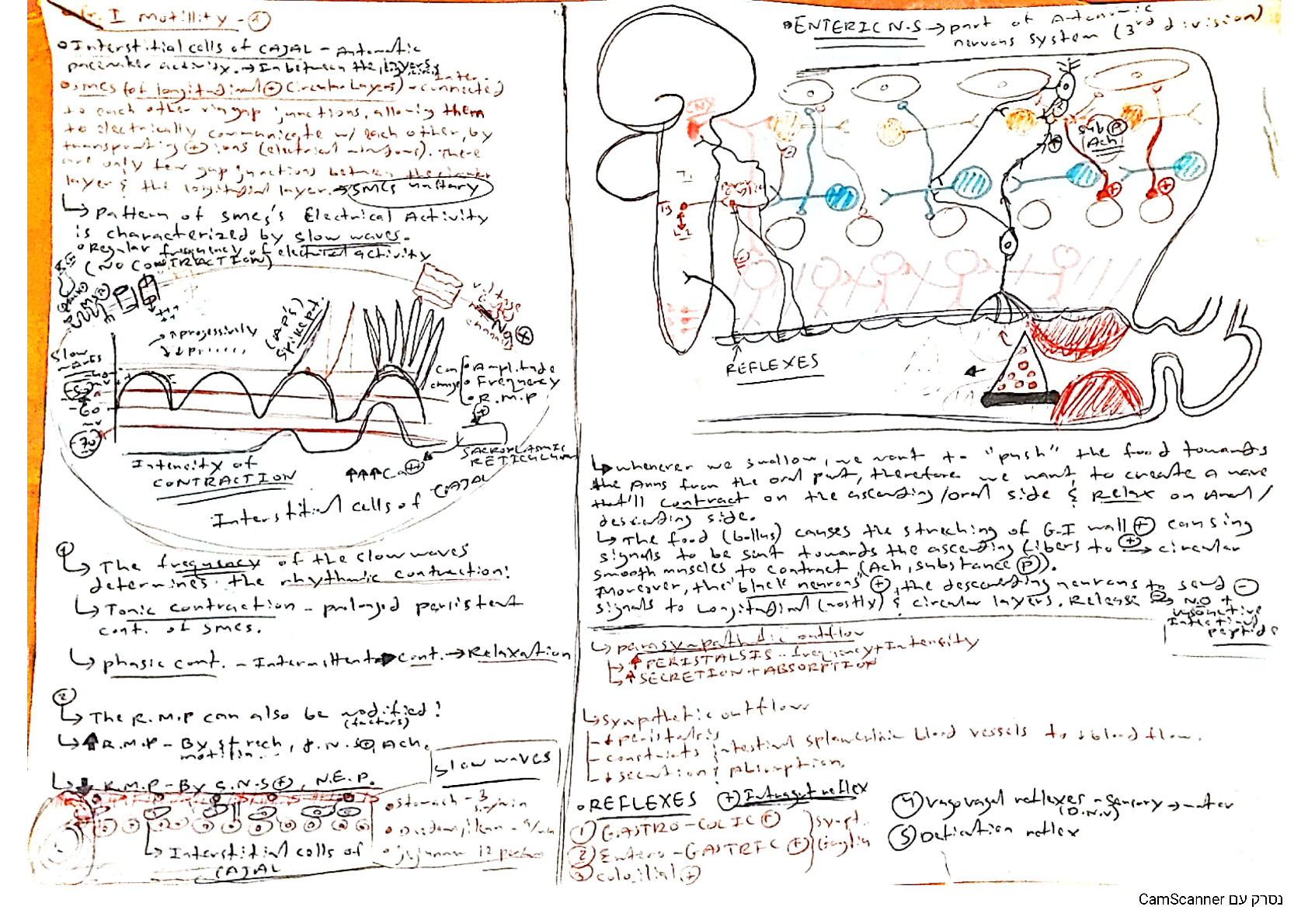



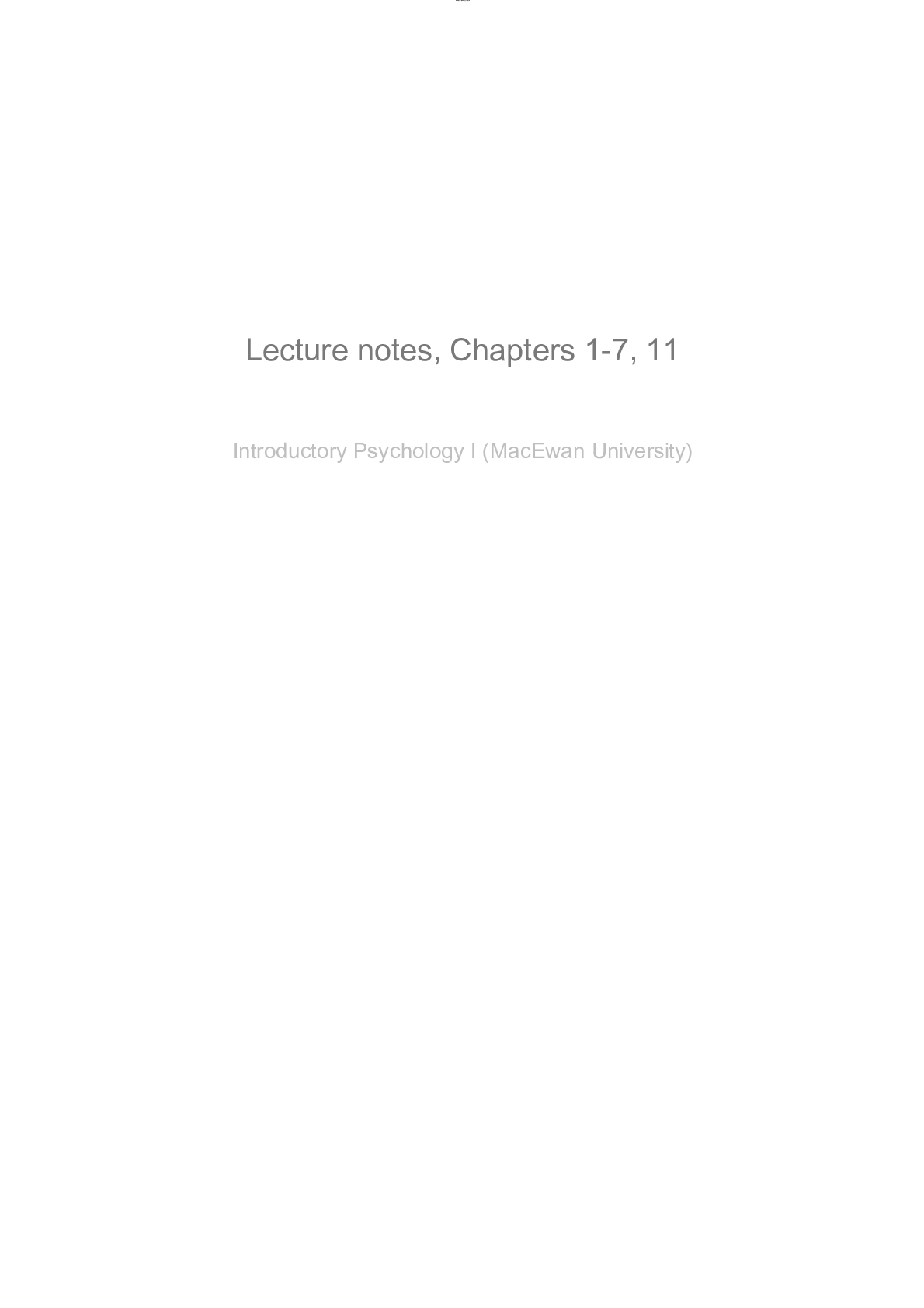

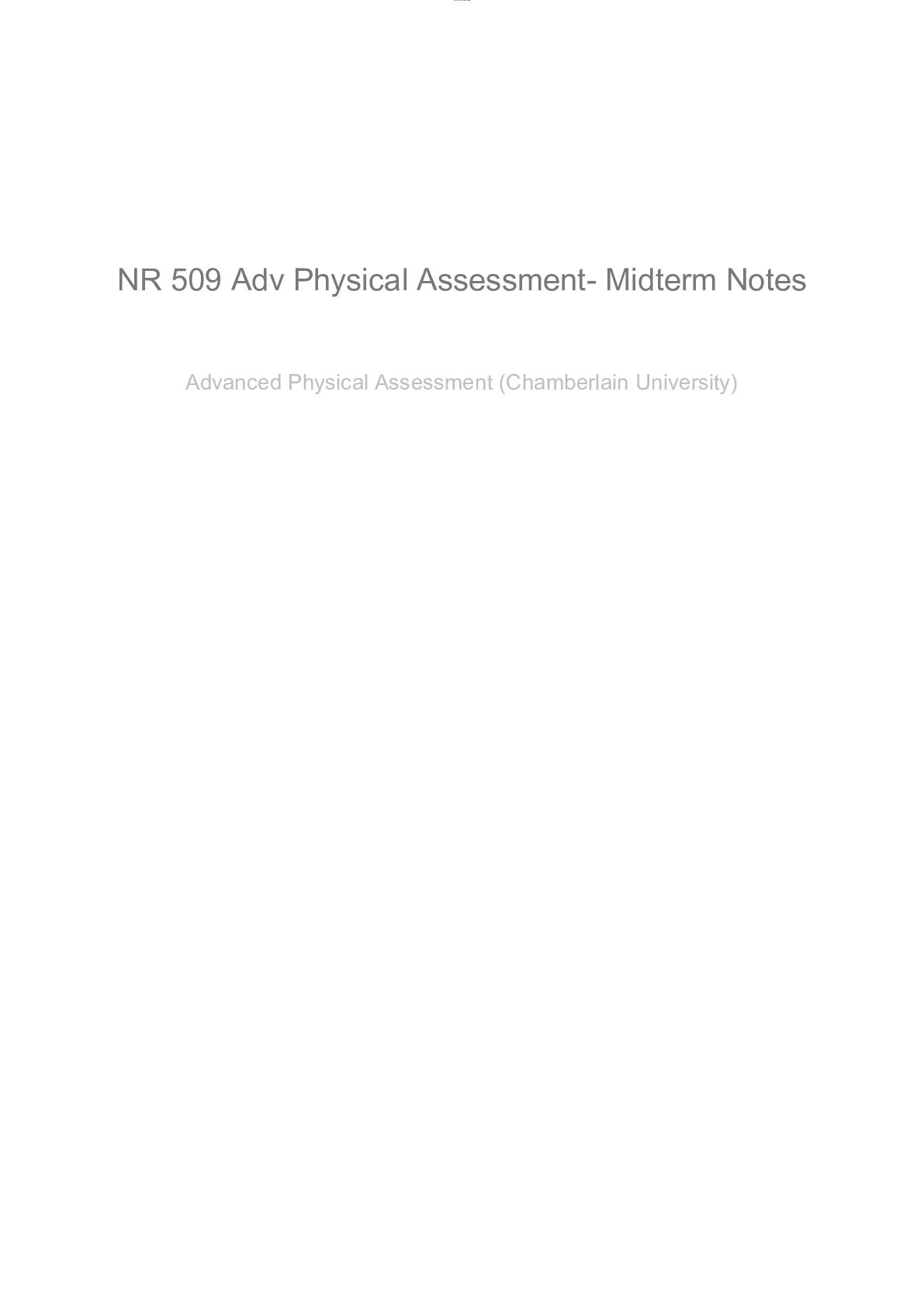

.png)



